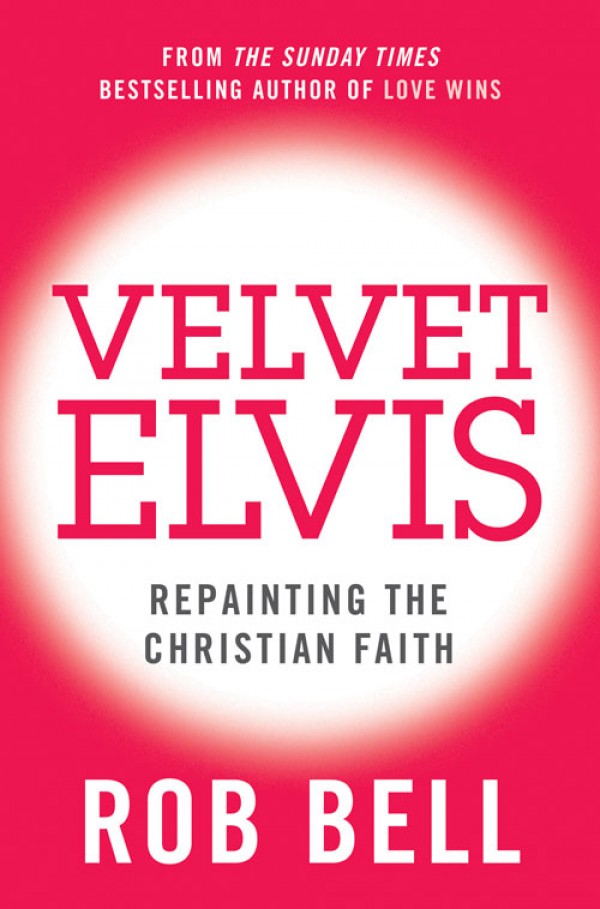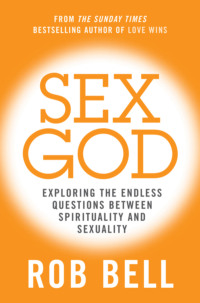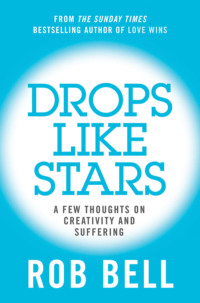
Полная версия
The Complete Rob Bell: His Seven Bestselling Books, All in One Place


THE COMPLETE ROB BELL
Velvet Elvis
Sex God
Jesus Wants to Save Christians
Drops Like Stars
Love Wins
What We Talk About When We Talk About God
About the Author
Credits
Copyright
About the Publisher

VELVET ELVIS
Repainting the Christian Faith
ROB BELL

Velvet Elvis
Cover
Title Page
Preface - Welcome to My Velvet Elvis
Movement One - Jump
Movement Two - Yoke
Movement Three - True
Movement Four - Tassels
Movement Five - Dust
Movement Six - New
Movement Seven - Good
Epilogue
Acknowledgments
Endnotes
PREFACE Welcome to my Velvet Elvis
In my basement, behind some bikes and suitcases and boxes, sits a Velvet Elvis. A genuine, bought-by-the-side-of-the-road Velvet Elvis. And to say that this painting captures The King in all his glory would be an understatement. It’s not the young Elvis—the thin one with the slicked-back hair in those black-and-white concert photos in which he’s playing a guitar that’s not plugged in. And it’s not the old Elvis—the big one in the shiny cape singing to old women in Hawaii. My painting is the “Pre-doughnut Elvis.”
A touch of blue in the hair; the tall, white collar that suggests one of those polyester jumpsuits; and those lips . . . if you stare long enough, you might even see them quiver.
But I think the best part of my Velvet Elvis is the lower left-hand corner, where the artist simply wrote a capital R and then a period.
R.
Because when you’re this good, you don’t even have to write your whole name.
What if, when the artist was done with this masterpiece, R. had announced there was no more need for anyone to paint, because he or she had just painted the ultimate painting? What if R. had held a press conference, unveiled his painting, and then called on all painters everywhere to put down their brushes, insisting that since the ultimate painting had been painted, there was simply no need for any of them to continue their work?
We would say that R. had lost his mind. We say this because we instinctively understand that art has to, in some way, keep going. Keep exploring, keep arranging, keep shaping and forming and bringing in new perspectives.
For thousands of years followers of Jesus, like artists, have understood that we have to keep going, exploring what it means to live in harmony with God and each other. The Christian faith tradition is filled with change and growth and transformation. Jesus took part in this process by calling people to rethink faith and the Bible and hope and love and everything else, and by inviting them into the endless process of working out how to live as God created us to live.
The challenge for Christians then is to live with great passion and conviction, remaining open and flexible, aware that this life is not the last painting.
Times change. God doesn’t, but times do. We learn and grow, and the world around us shifts, and the Christian faith is alive only when it is listening, morphing, innovating, letting go of whatever has gotten in the way of Jesus and embracing whatever will help us be more and more the people God wants us to be.
There are endless examples of this ongoing process, so I’ll describe just one. Around 500 years ago, a man named Martin Luther raised a whole series of questions about the painting the church was presenting to the world. He insisted that God’s grace could not be purchased with money or good deeds. He wanted everyone to have their own copy of the Bible in a language they could read. He argued that everyone had a divine calling on their lives to serve God, not just priests who had jobs in churches. This concept was revolutionary for the world at that time. He was articulating earth-shattering ideas for his listeners. And they heard him. And something big, something historic, happened. Things changed. Thousands of people connected with God in ways they hadn’t before.
But that wasn’t the end of it. Luther was taking his place in a long line of people who never stopped rethinking and repainting the faith. Shedding unnecessary layers and at the same time rediscovering essentials that had been lost. Luther’s work was part of what came to be called the Reformation. Because of this movement, the churches he was speaking against went through their own process of rethinking and repainting, making significant changes as a result.
And this process hasn’t stopped.
It can’t.
In fact, Luther’s contemporaries used a very specific word for this endless, absolutely necessary process of change and growth. They didn’t use the word reformed; they used the word reforming. This distinction is crucial. They knew that they and others hadn’t gotten it perfect forever. They knew that the things they said and did and wrote and decided would need to be revisited. Rethought. Reworked.
I’m part of this tradition.
I’m part of this global, historic stream of people who believe that God has not left us alone but has been involved in human history from the beginning. People who believe that in Jesus, God came among us in a unique and powerful way, showing us a new kind of life. Giving each of us a new vision for our life together, for the world we live in.
And as a part of this tradition, I embrace the need to keep painting, to keep reforming.
By this I do not mean cosmetic, superficial changes like better lights and music, sharper graphics, and new methods with easy-to-follow steps. I mean theology: the beliefs about God, Jesus, the Bible, salvation, the future. We must keep reforming the way the Christian faith is defined, lived, and explained.
Jesus is more compelling than ever. More inviting, more true, more mysterious than ever. The problem isn’t Jesus; the problem is what comes with Jesus.
For many people the word Christian conjures up all sorts of images that have nothing to do with who Jesus is and how he taught us to live. This must change.
For others, the painting works for their parents, or it provided meaning when they were growing up, but it is no longer relevant. It doesn’t fit. It’s outdated. It doesn’t have anything to say to the world they live in every day. It’s not that there isn’t any truth in it or that all the people before them were misguided or missed the point. It’s just that every generation has to ask the difficult questions of what it means to be a Christian here and now, in this place, at this time.
And if this difficult work isn’t done, where does the painting end up?
In the basement.
Here’s what often happens: Somebody comes along who has a fresh perspective on the Christian faith. People are inspired. A movement starts. Faith that was stale and dying is now alive. But then the pioneer of the movement—the painter—dies and the followers stop exploring. They mistakenly assume that their leader’s words were the last ones on the subject, and they freeze their leader’s words. They forget that as that innovator was doing his or her part to move things along, that person was merely taking part in the discussion that will go on forever. And so in their commitment to what so-and-so said and did, they end up freezing the faith.
What gets lost is the truth that whoever painted that version was just like us, searching for God and experiencing God and trying to get a handle on what the Christian faith looks like. And then a new generation comes along living in a new day and a new world, and they have to keep the tradition going or the previous paintings are going to end up in the basement.
The tradition then is painting, not making copies of the same painting over and over. The challenge of the art is to take what was great about the previous paintings and incorporate that into new paintings.
And in the process, make something beautiful—for today.
For many Christians, the current paintings are enough. The churches, the books, the language, the methods, the beliefs—there is nothing wrong with it. It works for them and meets their needs, and they gladly invite others to join them in it. I thank God for that. I celebrate those who have had their lives transformed in these settings.
But this book is for those who need a fresh take on Jesus and what it means to live the kind of life he teaches us to live. I’m part of a community, a movement of people who have been living, exploring, discussing, sharing, and experiencing new understandings of Christian faith.
And we love it. We are alive in ways we never thought possible. We are caught up in something we gladly give our lives to. This is the place that I write from: a place of joy and freedom, as a member of a community wanting to invite others to come along on the journey. We are just getting started. I have as many questions as answers, and I’m convinced that we’re only scratching the surface. What I do know is that this pursuit of Jesus is leading us backward as much as forward.
If it is true, then it isn’t new.
I am learning that what seems brand new is often the discovery of something that’s been there all along—it just got lost somewhere and it needs to be picked up, dusted off, and reclaimed. I am learning that I come from a tradition that has wrestled with the deepest questions of human existence for thousands of years. I am learning that my tradition includes the rabbis and reformers and revolutionaries and monks and nuns and pastors and writers and philosophers and artists and every person everywhere who has asked big questions of a big God.
Welcome to my Velvet Elvis.
Конец ознакомительного фрагмента.
Текст предоставлен ООО «ЛитРес».
Прочитайте эту книгу целиком, купив полную легальную версию на ЛитРес.
Безопасно оплатить книгу можно банковской картой Visa, MasterCard, Maestro, со счета мобильного телефона, с платежного терминала, в салоне МТС или Связной, через PayPal, WebMoney, Яндекс.Деньги, QIWI Кошелек, бонусными картами или другим удобным Вам способом.









